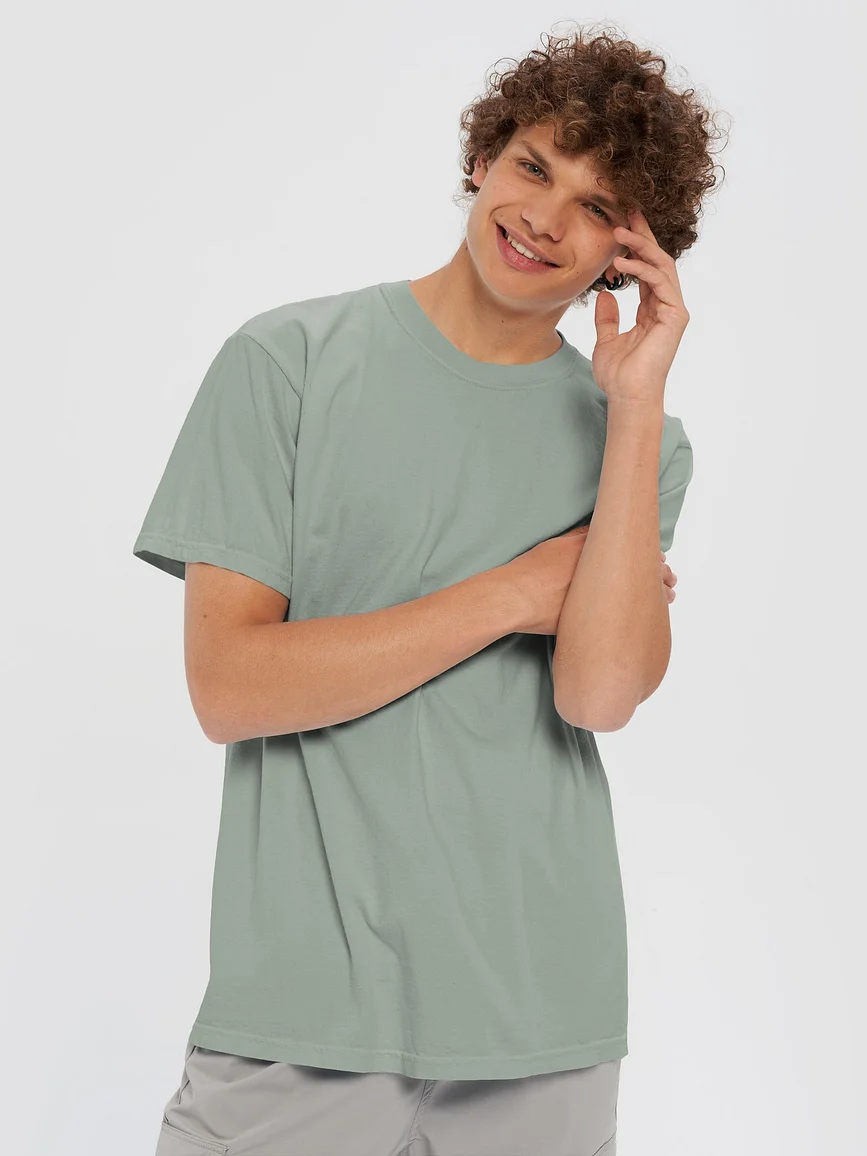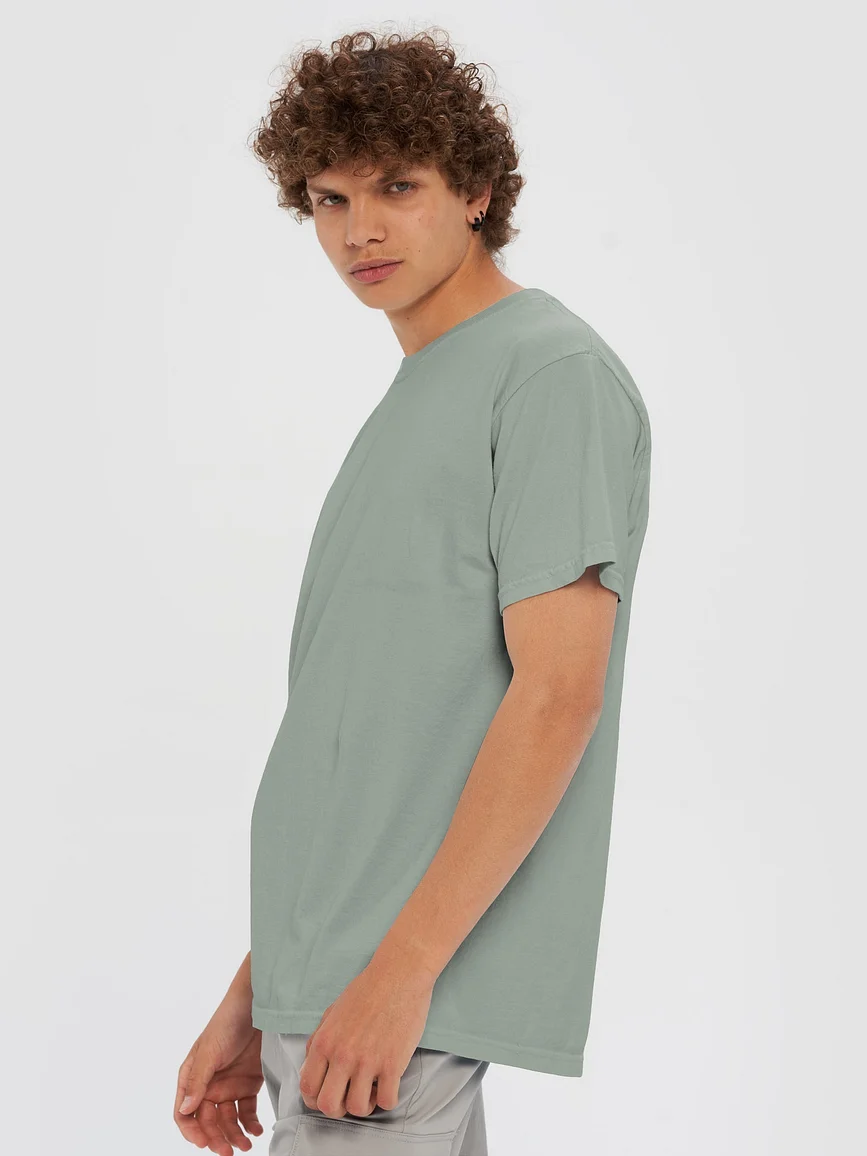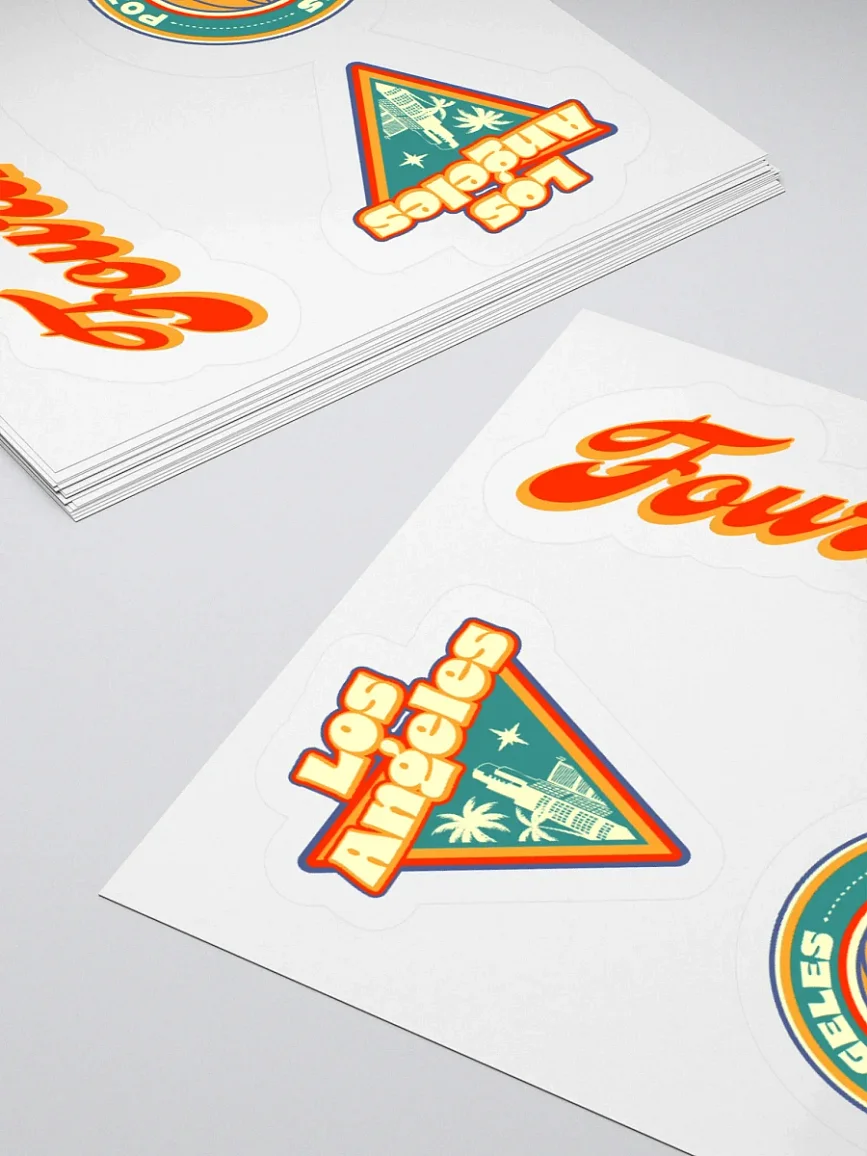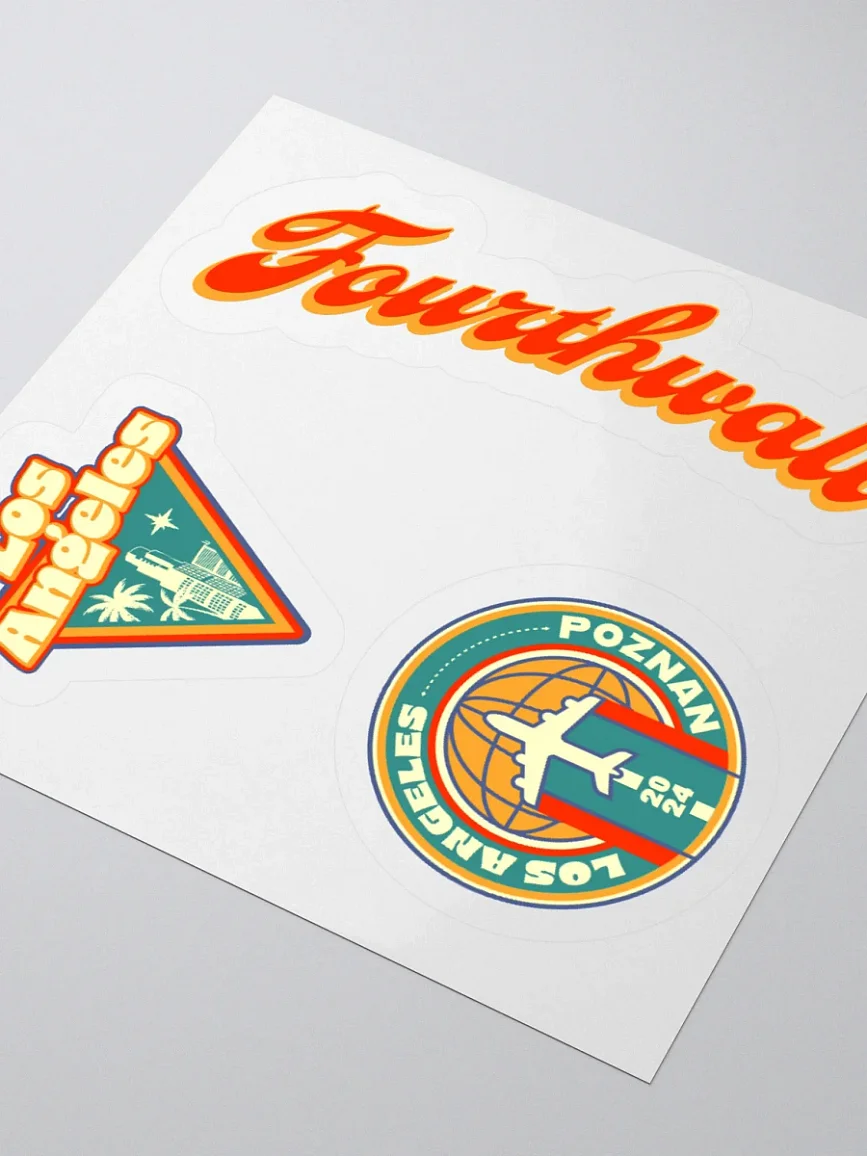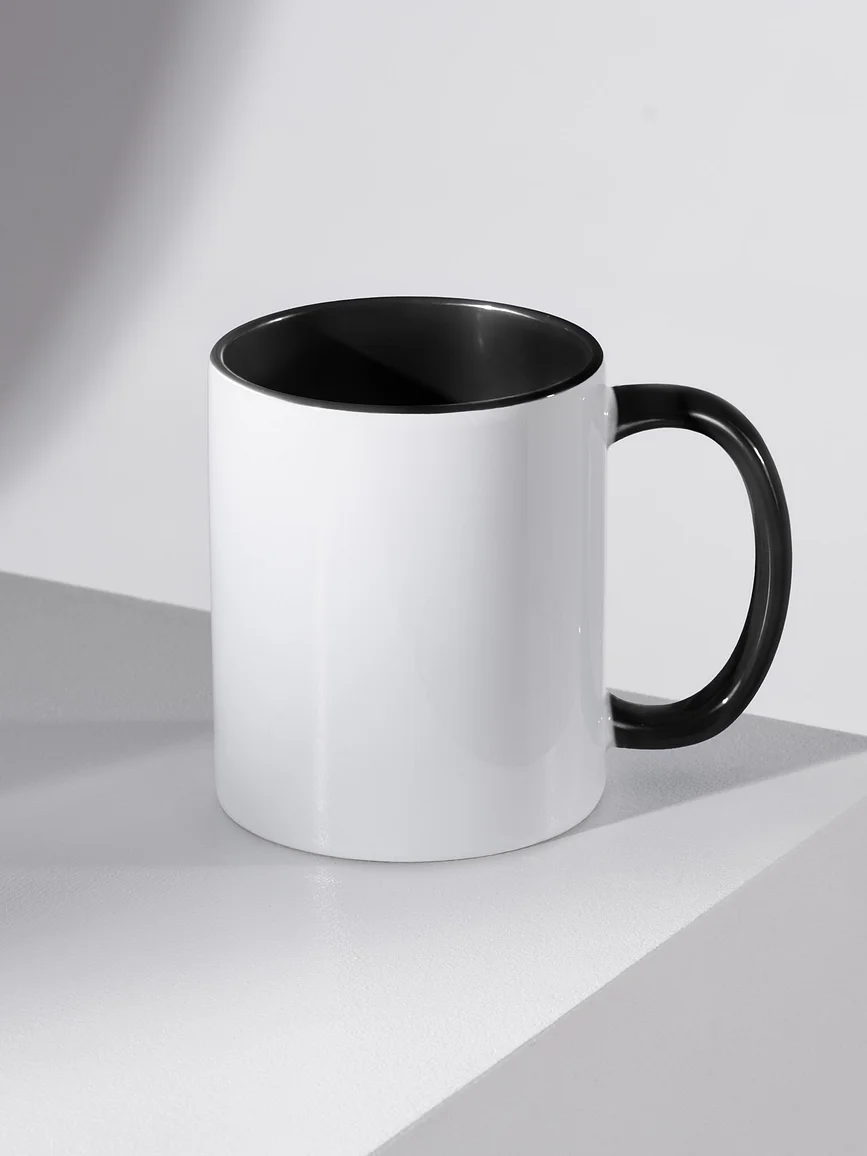The 13 Best Alternatives to Zazzle for Print-On-Demand in 2025

Zazzle has been a go-to for personalized products and passive print-on-demand income for years.
With its massive product catalog and built-in customer base, it offers creators a hands-off way to earn royalties on everything from wedding invites to mugs.
But while Zazzle is free and easy to get started with, it comes with some serious trade-offs: outdated tools, limited branding options, low royalties, and a marketplace that’s saturated to the brim.
It’s great if you’re dabbling in event-based merch or niche templates; however, if you're trying to scale, grow a brand, or sell apparel at volume, you'll quickly hit a wall.
So if Zazzle isn’t quite cutting it for your creative ambitions, don’t worry, we’ve got options!
In this guide, we’ll break down the 13 best alternatives to Zazzle for artists, creators, and entrepreneurs who want more control, better tools, and higher margins.
What Makes Zazzle Stand Out?

Zazzle has carved out a unique niche in the print-on-demand space by focusing on personalized products, especially for life’s big moments like weddings, birthdays, holidays, and events.
While it may not be your go-to for scaling a full-blown brand, it absolutely shines as a hands-off solution for passive income and hyper-customizable gifts.
Here’s a full breakdown of why Zazzle continues to attract creators, designers, and even corporate teams looking for custom merch:
Product Customization Tools

Zazzle isn’t just a marketplace; it’s a full-fledged design playground.
Creators and customers alike can create fully personalized products with Zazzle’s built-in design editor, which sets it apart from most POD platforms that rely on third-party software.
- Zazzle Design Tool: Offers drag-and-drop functionality, with options to change fonts, swap out images, edit colors, and layer text. Customers can even personalize their designs post-purchase, which makes Zazzle a hit for one-off, sentimental gifts.
- Create-Your-Own Design Flow: Anyone can create designs directly in the browser without needing Photoshop or Illustrator. It’s plug-and-play for beginners.
- Upload Option: Prefer designing in Canva or Adobe? You can upload your original artwork and apply it across multiple SKUs instantly.
Print-on-Demand Fulfillment & Shipping
Zazzle is fully hands-off:
- No inventory or shipping: Everything is printed, packed, and shipped by Zazzle’s global fulfillment network
- Customer service handled by Zazzle: Buyers reach out to Zazzle support, not you, which saves tons of time
- Shipping options: Includes standard (4–7 days) and premium (2–3 days) delivery for domestic orders
There’s no custom-branded packaging, but customers expect the Zazzle branding, so that’s not really a drawback on this platform.
Massive Product Catalog

With over 1,000 customizable products, Zazzle is easily one of the most versatile POD marketplaces out there.
You’ll find standard categories like:
- Apparel (T-shirts, hoodies, leggings)
- Home décor (pillows, mugs, coasters, wall art)
- Tech accessories (phone cases, laptop sleeves)
But where Zazzle really sets itself apart is in its event-based inventory:
- Invitations and Stationery: From wedding invites to baby shower thank-you cards
- Craft & Party Supplies: Think napkins, stickers, banners, favor bags
- Wedding Gear: Custom signs, seating charts, bridesmaid gifts
- Office & School Supplies: Planners, notebooks, pens
- Sports & Games: Custom ping pong paddles, cornhole boards, poker chips
If you’re targeting niche audiences (like DIY brides or party planners), this is where Zazzle absolutely thrives.
Pricing & Royalties
Zazzle’s royalty model gives sellers flexibility while keeping the barrier to entry at zero:
- Free to join: No subscription fees or upfront costs
- Set your own royalty rate: You earn a percentage on every sale, from the default 5% up to 99% (except for Zazzle Heart products, which are locked at 5%)
- Automatic payout system: Royalties are calculated after base product costs and posted monthly
It's worth noting that you won't be earning massive margins like with Shopify + Printful setups, but it’s a great model for passive earnings.
Built-in Marketplace with Massive Reach

Unlike Shopify or WooCommerce, where you’re responsible for driving traffic, Zazzle is a discovery-based marketplace with over 30 million active customers.
- Zero marketing required: Your products appear in search results and recommended pages
- Perfect for passive income: Once listed, your designs can generate sales over time without constant promotion
That makes Zazzle ideal for creators who don’t want to deal with marketing or setting up a full eCommerce website.
Digital Product Support (Yes, Really)
Here’s a feature that’s shockingly rare in POD marketplaces: instant downloads.
Zazzle lets you sell digital goods like:
- Printable invitations
- Planners and templates
- Clipart and design elements
- Worksheets, cards, and checklists
It’s one of the few platforms that allows this hybrid approach, giving you even more ways to monetize your creativity.
Why You Might Want to Look for a Zazzle Alternative?
Let’s not sugarcoat it: Zazzle isn’t built for creators who want full control, scalability, or serious brand growth.
If you’re hoping to run a professional online merch store or dominate in eCommerce, there are some major limitations you need to know.
Here are some other reasons why Zazzle falls short, and why you might want to consider looking elsewhere:
No Branding Control or Storefront Customization
If you're looking to build a recognizable brand, Zazzle provides you with almost no tools to do so.
- No custom domain: You can’t connect your own website or URL.
- No storefront design control: You’re stuck with a generic Zazzle layout that looks the same as every other store.
- No branded packaging: All products ship in Zazzle-branded boxes or envelopes.
- No logo placement or brand presence: You’re just a creator in their system, not a brand owner.
Clunky Design Tools and No Bulk Uploads
Zazzle’s product editor feels stuck in the early 2010s.
- No bulk listing management or smart syncing tools.
- No way to duplicate product settings across SKUs.
- You must manually resize and reposition each design on every product, one by one.
If you’re uploading more than a few designs, this becomes a time-consuming task.
Limited Analytics and Performance Insights
Want to know which products are driving the most traffic? Which listings convert best? Too bad.
Zazzle’s dashboard gives you barebones analytics at best:
- No heatmaps or conversion data.
- No keyword tracking or SEO feedback.
- No A/B testing or sales optimization tools.
If you're used to platforms like Etsy, Shopify, or even Redbubble, Zazzle’s reporting will feel extremely limited.
Oversaturated Marketplace = Low Visibility
With millions of designs uploaded, Zazzle’s marketplace is brutally competitive.
- New listings get buried quickly.
- Most creators never hit the front page unless they’re in a niche like weddings or stationery.
- Zazzle's search algorithm is a black box, making it hard to optimize for visibility.
Unless you're hyper-niched or targeting seasonal trends, you’ll likely struggle to stand out.
Low Margins Due to Royalty System
Zazzle allows you to set your own royalty rate; however, this freedom comes with a catch.
- The higher you set your royalty, the more Zazzle penalizes your product visibility by making it look overpriced.
- Customers often skip pricier products, even if the design is great.
- Most successful sellers stay within the 10%–15% range, meaning your cut is typically just a couple of dollars per sale.
It’s passive income, yes, but it’s more of a drip feed than a revenue stream.
Weak Support for Serious Sellers
Zazzle's customer support is primarily geared toward buyers, rather than sellers.
- Most resources are DIY help docs.
- Phone/email support is available, but they are slow and not specifically tailored to creators trying to scale.
- There's no seller forum or creator community to tap into for feedback or collaboration.
You’re largely on your own, and the tools they offer reflect that.
Overall, Zazzle is great for what it is: a passive, event-focused POD platform with built-in traffic and zero startup cost.
But if you're dreaming bigger than birthday mugs and baby shower invites, it’s probably time to level up. Take a look at the alternative platforms below and compare them to Zazzle.
13 Alternative Platforms to Zazzle
1. Fourthwall
.webp)
Fourthwall is a modern, creator-first eCommerce platform designed for people who want full control over their brand, from storefront to fulfillment.
Unlike Zazzle, which locks you into its marketplace, Fourthwall allows you to build your own website, sell both physical and digital products, offer memberships, accept tips, and connect directly with your audience.
With built-in integrations for YouTube, TikTok, Twitch, and email tools like Klaviyo and Mailchimp, it’s perfect for creators looking to turn fans into customers without needing coding or outside tools.
Add in high-quality merch, global fulfillment, and advanced print options like DTG, sublimation, embroidery, and screen printing, and you’ve got a platform made to scale with you, not restrict you.
And for those ready to level up, there’s now Fourthwall Pro, an optional upgrade built for creators and teams looking to scale without limits. For $19/month (or $180 annually), Pro unlocks premium tools designed to maximize profits, streamline collaboration, and enhance your storefront:
🔑 Fourthwall Pro Features:
- Unlimited Team Members: Perfect for creators working with designers, assistants, or managers
- 0% Digital Product Fee: Keep 100% of your revenue on ebooks, courses, and other digital downloads
- Free Sample Credits: Get $10/month to order and test products before launching them to fans
- Free .store Domain: Instantly create a polished, professional brand presence with your own domain
- Priority Support: Access dedicated assistance from Fourthwall’s support team for faster resolutions
Whether you’re just starting out or managing a growing merch empire, Fourthwall gives you everything you need to build, customize, and scale your brand all in one platform.
💰Pricing:
Free Plan – $0/month
- 5% fee on memberships and digital products
- No platform fees on physical products
Pro Plan – $19/month ($180 annually)
- 0% fee on digital products
- Same 5% membership fee
- Unlocks additional features like advanced analytics, custom domains, and priority support
✅ Pros:
- Own your storefront and customer data
- Sell physical products, digital goods, tips, and memberships
- Fully customizable website with your own branding
- Native integrations with YouTube, TikTok Shop, Twitch, and email platforms
- Clean UI and mobile app for creators and customers
- Global shipping with fulfillment centers in the US, UK, EU, and Australia
- Competitive base pricing and multiple professional print options
- Ability to create product bundles or curated drops
❌ Cons:
- No public marketplace to drive organic traffic
- Limited product selection in niches like cosmetics or fitness gear
2. Printful
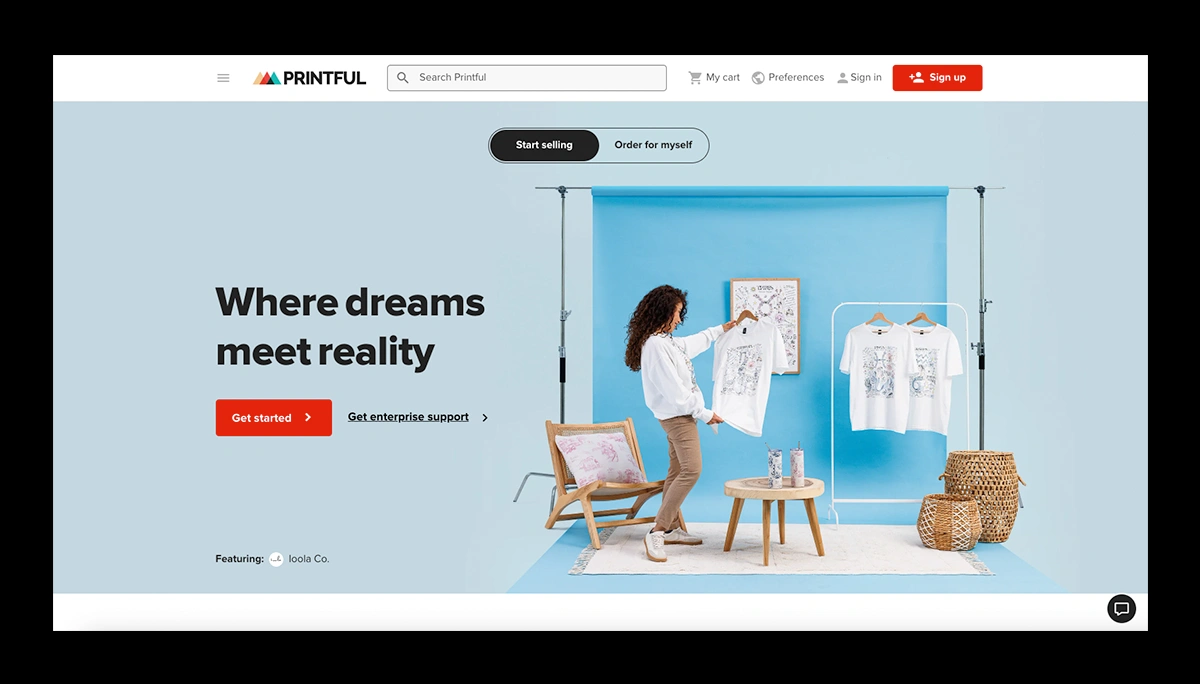
Printful delivers high-quality printing with no minimum order requirements, making it an excellent choice for creators and small business owners seeking a reliable print-on-demand partner.
Its platform is easy to navigate and integrates seamlessly with popular eCommerce solutions like Shopify, Etsy, WooCommerce, BigCommerce, and Squarespace, allowing sellers to connect with their audience wherever they already shop.
One of Printful’s most useful tools is its built-in mockup generator, which allows you to preview your designs on over 370 products, ranging from clothing and accessories to home décor and wall art.
This feature streamlines the setup process, helping you create polished, professional listings without requiring graphic design experience.
With global fulfillment centers and the ability to customize everything from inside shirt labels to branded packing slips, Printful gives you the infrastructure to run a serious ecommerce business
💰Pricing:
Free Plan – $0/month
- Unlimited product uploads and stores
- Full access to their catalog and integrations
- Custom packing slips (no full packaging options)
Printful Growth – $24.99/month (or free if you hit $12,000 in annual sales)
- Access to discounted product rates (20–30% off)
- Custom packaging and pack-ins
- Warehousing for non-Printful products
- Extra branding and mockup tools
✅ Pros:
- Beginner-friendly with a sleek UI and built-in mockup generator
- Offers white-label packaging with custom inside shirt labels, packing slips, and branding
- Integrates with over 28 platforms, including Shopify, Etsy, WooCommerce, Amazon, Squarespace, and more
- Global fulfillment centers for faster worldwide shipping
- High-quality products, including apparel, accessories, wall art, tech gear, and pet items
- Embroidery options available on select products
- Supports warehousing for non-POD items on the Growth Plan
- Excellent option for businesses aiming to scale long-term with brand consistency
❌ Cons:
- No built-in marketplace. You’ll need to bring your own traffic
- Profit margins can be tighter unless you’re on the paid Growth plan
- Lacks community or creator-specific tools like memberships or digital downloads
- Customer support is limited to chat and a contact form
3. Sellfy

Similar to Fourthwall, Sellfy is an all-in-one eCommerce platform built for those who want a simple but powerful solution for selling print-on-demand products, digital downloads, and subscriptions, all from a fully customizable storefront.
Unlike Zazzle, which locks you into its marketplace, Sellfy gives you complete control over your brand with a built-in website builder, custom domains, and seamless integration across social media, YouTube, and your existing site.
Its print-on-demand feature makes it easy to design and sell high-quality products, such as t-shirts, hoodies, mugs, hats, and framed posters.
Sellfy automatically handles production, fulfillment, and global shipping from 11 fulfillment centers worldwide.
On top of that, it comes equipped with powerful built-in marketing tools, like email campaigns, discount codes, upsells, affiliate programs, and cart abandonment recovery, so you can grow your business without juggling multiple platforms.
💰Pricing:
Starter Plan – $22/month
- Up to $10K annual sales
- Unlimited products (digital, physical, subscriptions, POD)
- Built-in email marketing and core marketing tools
Business Plan – $59/month
- Up to $50K annual sales
- Includes upselling, affiliate marketing, and cart abandonment emails
- Remove Sellfy branding + custom fields for products
Premium Plan – $119/month
- Up to $200K annual sales
- Priority support and advanced sales tools
- Product migration assistance + full customization features
✅ Pros:
- All-in-one platform for print-on-demand, digital downloads, subscriptions, and physical products
- Built-in storefront builder with custom domains and branding options
- Automated production and global fulfillment; no inventory or shipping required
- Integrated marketing tools
- Embeddable product links, "Buy Now" buttons, and full-store embeds for selling on any website or blog
- Optimized for mobile shopping and automatically translates store interfaces based on buyer location
- Accepts secure payments via PayPal and Stripe, with instant payouts
❌ Cons:
- Smaller print-on-demand catalog compared to other POD platforms
- No built-in marketplace, you must drive your own traffic
- Higher starting cost than platforms like Fourthwall for beginners
4. Gelato
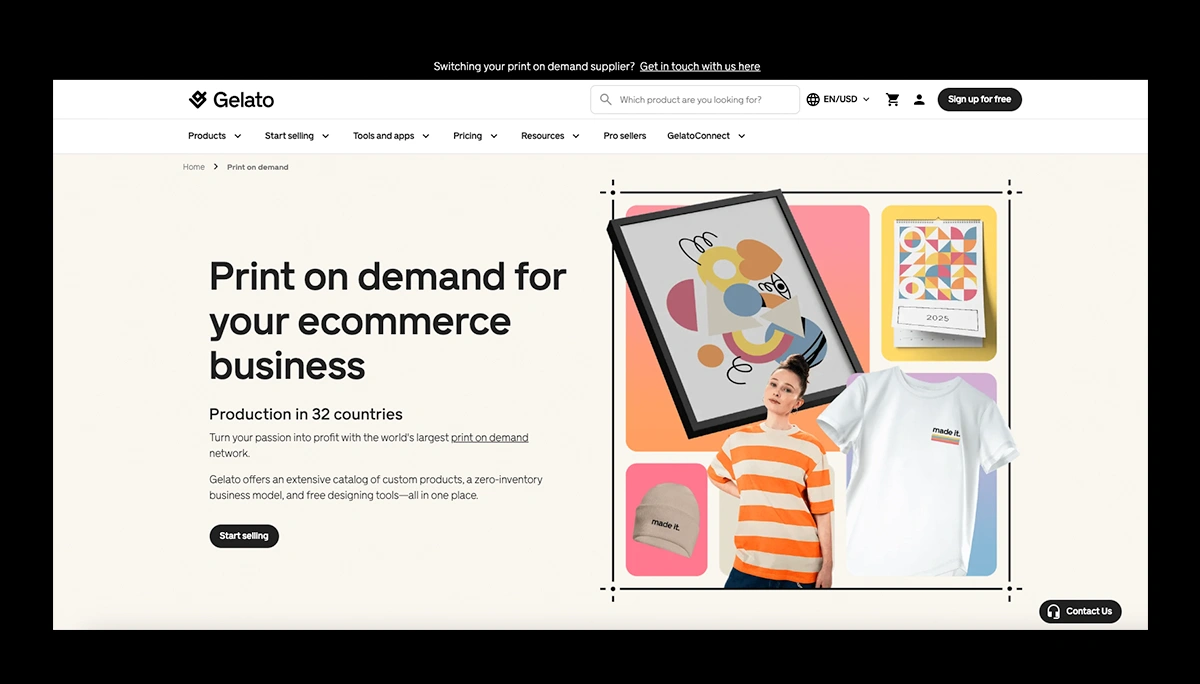
When it comes to scaling a global print-on-demand business, Gelato stands out by making it possible to sell worldwide while producing locally.
With a network of 140+ production partners across 32 countries, Gelato ensures your products are printed and shipped from the facility closest to your customer, resulting in faster delivery times, lower shipping costs, and reduced carbon emissions.
The platform integrates seamlessly with top eCommerce solutions like Shopify, Etsy, WooCommerce, Wix, and API connections, so you can link your existing store or start fresh without heavy setup.
Plus, Gelato equips creators with free design tools, a robust mockup studio, branded packaging options, and millions of stock images, giving you everything you need to create, customize, and sell high-quality products, without managing inventory or fulfillment yourself.
💰Pricing:
Free Plan – $0/month
- Access to hundreds of products
- Local production in 32 countries
- Shopify, Etsy, and WooCommerce integrations
- Free design tools and standard mockups
Gelato+ – $25/month (or $249/year, save 17%)
- Up to 20% off product pricing
- Access to premium mockups and Mockup Studio
- Millions of stock images, fonts, and graphics
- Branded labels and packaging inserts
Gelato+ Gold – $129/month (or $1,285/year, save 17%)
- Up to 25% off products
- Advanced pricing optimization via Price Navigator
- 30% off branded packaging
- Dedicated migration support
Gelato Platinum – Custom Pricing
- Designed for high-volume sellers and enterprise businesses
- Custom discounts and onboarding services
- Dedicated Customer Success Manager
- Exclusive Platinum-only events and community
✅ Pros
- Global network: 140+ print partners in 32 countries for fast, local fulfillment
- Seamless integrations with Shopify, Etsy, WooCommerce, Wix, and API options
- Huge product range: apparel, wall art, mugs, tote bags, calendars, phone cases, and more
- Professional design tools: mockup studio, design maker, and millions of stock assets
- Eco-conscious production: localized fulfillment reduces emissions and shipping distances
- Flexible branding options: custom labels, packaging inserts, and premium mockups
- Risk-free setup: no upfront costs or hidden fees, pay only when you sell
- 24/7 customer support and migration assistance for scaling businesses
❌ Cons
- No built-in storefront; you need an existing eCommerce site or third-party platform
- Advanced branding tools and mockups are locked behind paid plans
- Limited customization flexibility compared to platforms like Fourthwall
- Not designed for creators seeking memberships, tipping, or fan community features
5. Printify
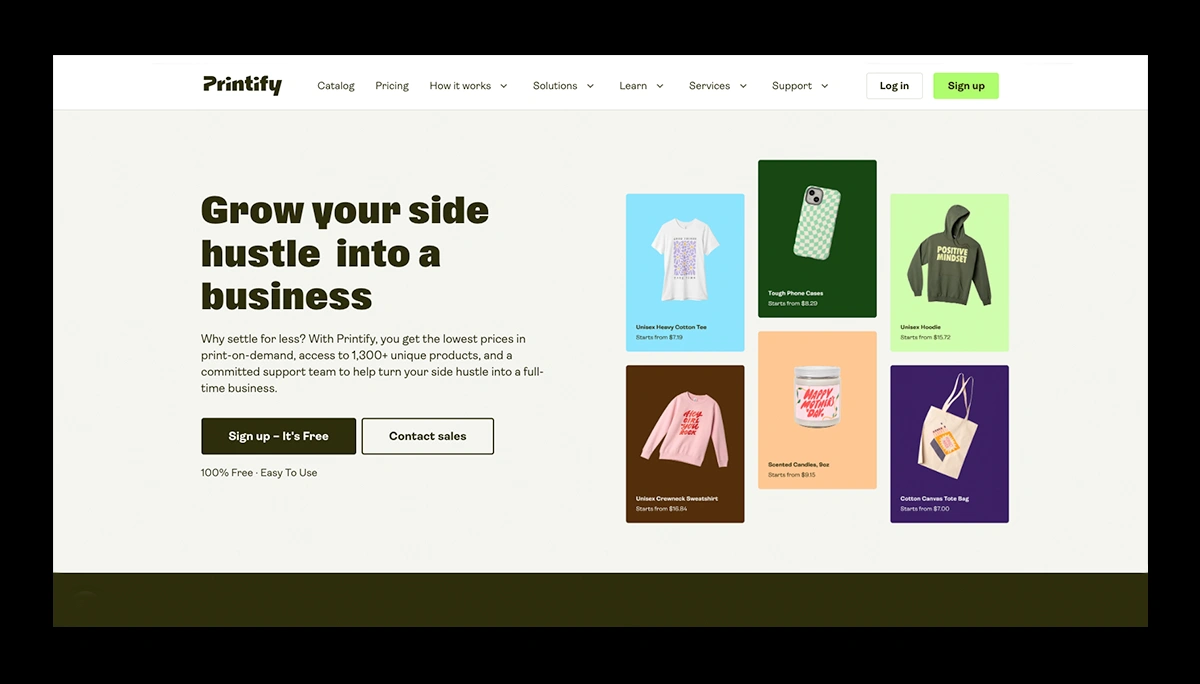
If you want massive product variety and the lowest possible prices in print-on-demand, Printify is one of the best platforms to make it happen.
Acting as a POD aggregator, Printify connects you with 80+ trusted print providers worldwide and gives you access to over 1,300 customizable products, from apparel and mugs to home décor, phone cases, and more.
The platform integrates seamlessly with Shopify, Etsy, WooCommerce, Squarespace, Wix, Amazon, eBay, TikTok, and other major marketplaces, making it a versatile choice for sellers seeking flexibility and broad reach.
With tools like the free Product Creator, AI-powered mockup generator, and Printify Choice (which automatically routes orders to the best-quality print provider), Printify makes it easy for anyone to launch, scale, and profit, without upfront costs or inventory headaches.
💰Pricing:
Free Plan – $0/month
- Access to the entire catalog of 1,300+ products
- Integrations with Shopify, Etsy, Amazon, TikTok, and more
- Unlimited product designs and up to 5 stores per account
- Access to Printify Choice for automatic best-provider selection
Premium Plan – $29/month (or $299/year, save 14%)
- Up to 20% off product costs
- Manage up to 10 stores per account
- Ideal for growing ecommerce businesses
Enterprise Plan – Custom Pricing
- Designed for high-volume sellers and enterprise-level brands
- Additional bulk discounts
- Unlimited stores and product designs
- Dedicated account manager and SLA options
✅ Pros
- Massive product catalog with 1,300+ customizable items across apparel, home décor, accessories, and more
- Highly competitive pricing + up to 20% discounts with Premium
- Printify Choice ensures optimal quality and reliability for every order
- Beginner-friendly tools like the AI-powered Mockup Generator and free Product Creator
- Strong eCommerce integrations with Shopify, Etsy, Amazon, WooCommerce, Wix, TikTok, and others
- Pop-Up Store option lets beginners sell without building a full eCommerce site
- Shutterstock integration provides millions of stock images for instant designs
- Global express shipping available for select products in 2-3 days
❌ Cons
- Quality control varies by print provider; sample orders are recommended
- No built-in storefront unless you use Printify’s basic Pop-Up Store
- No direct support for digital products or memberships
- Some branding options (like custom packaging) are limited compared to Printful
6. Spreadshirt

Founded in 2002, Spreadshirt has grown into one of the largest print-on-demand (POD) platforms globally, with over 250 customizable products and a network of 100,000+ active sellers.
Whether you want to build your own branded shop, tap into Spreadshirt’s existing marketplace, or integrate POD into your existing Shopify or WooCommerce store through SPOD, the platform gives creators complete control over how they sell and scale.
Its design editor is beginner-friendly, allowing you to upload your own artwork or create designs from scratch using built-in templates, text tools, and community-created assets.
It also offers five printing methods, including direct digital printing, embroidery, flex, flock, and special effects printing, making it a great option for sellers who want professional-quality merch.
With no upfront costs, multiple sales channels, and global fulfillment, it’s designed to help creators monetize their designs without worrying about inventory or logistics.
💰Pricing:
Free to Use — $0/month
- Pay only the base product cost + printing
- Profit margins depend on sales channels:
- Your Spreadshop → Set your own prices and keep full profits
- Spreadshirt Marketplace → Earn 20% per sale
✅ Pros:
- Over 250+ customizable POD products
- No upfront costs; pay only when you sell
- Multiple selling options: Spreadshop, Marketplace, and SPOD integrations
- Beginner-friendly design editor with templates and drag-and-drop tools
- Variety of printing techniques for high-quality merch
- Integrates with Shopify, WooCommerce, Squarespace, and more via SPOD
- Global fulfillment across 18 countries
- Volume discounts for bulk orders
❌ Cons:
- Only 20% profit margin on Spreadshirt’s marketplace
- Mixed reviews on product quality and color consistency
- Limited control over profit margins compared to platforms like Printful
- Customer service is only available Monday through Friday
- Some regions have longer shipping times
7. Gooten
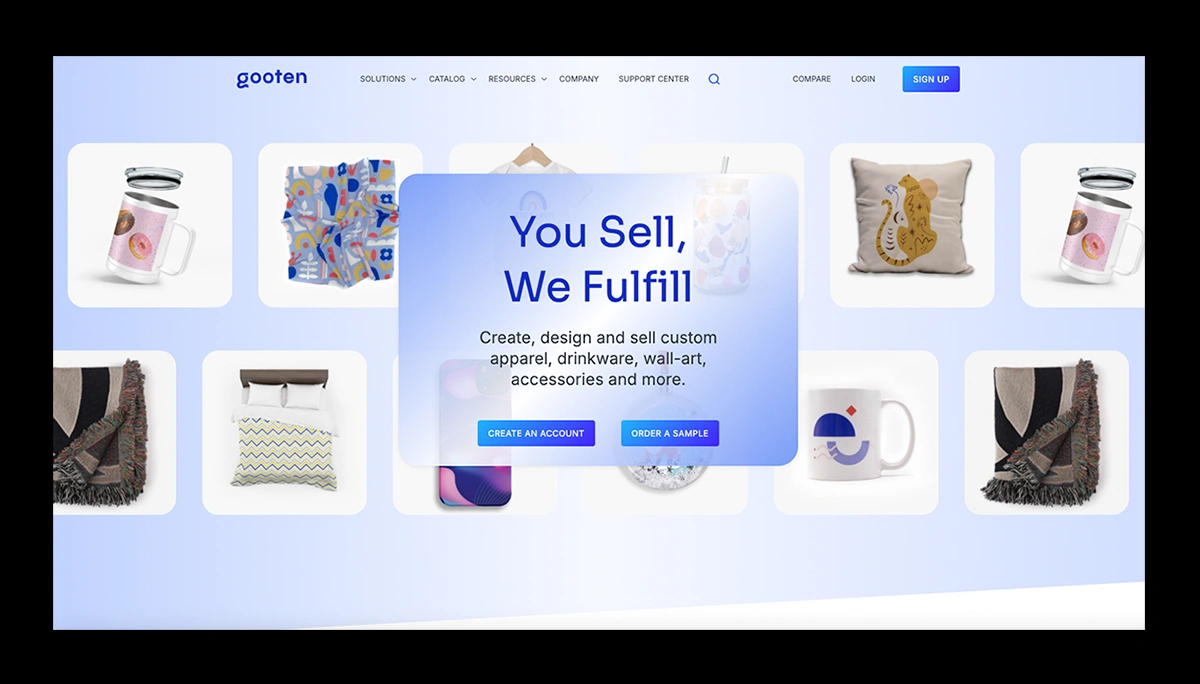
Gooten isn’t your typical print-on-demand platform. It’s more like having a personal logistics team working behind the scenes, connecting you to a global network of manufacturers and automating everything from production to delivery.
With over 150 customizable products, strong margins, and powerful automation tools, it’s built for sellers who treat print-on-demand like a business, not a hobby.
Where Gooten really stands out is in its backend fulfillment model. Instead of handling production in-house, Gooten dynamically routes each order to the best printing partner based on location, product type, and inventory availability.
That means faster shipping times, fewer errors, and competitive base costs across apparel, wall art, home goods, drinkware, accessories, and niche products, such as pet beds, yoga mats, and ornaments.
While it’s not the flashiest platform, its automation tools, supplier network, and competitive pricing make it ideal for scaling businesses and agencies managing multiple clients.
💰 Pricing:
Free to Use — $0/month
- Pay per product + shipping only
- Volume discounts available via VIM Program (tiers: Silver, Gold, Platinum)
✅ Pros:
- No subscription fees or hidden costs
- Over 150+ customizable POD products
- Dynamic order routing equals faster shipping & fewer delays
- Hands-off fulfillment with full automation
- Integrates with Shopify, Etsy, WooCommerce, BigCommerce, and custom APIs
- Bulk tools for scaling across multiple stores
- Competitive pricing with higher-than-average profit margins
❌ Cons:
- Not beginner-friendly, the dashboard has a learning curve
- Limited branding options (basic packing slips only)
- Mockup generator is minimal compared to Printful
- No built-in personalization or live product preview tools
- Customer support can be slower during peak seasons
8. VistaPrint
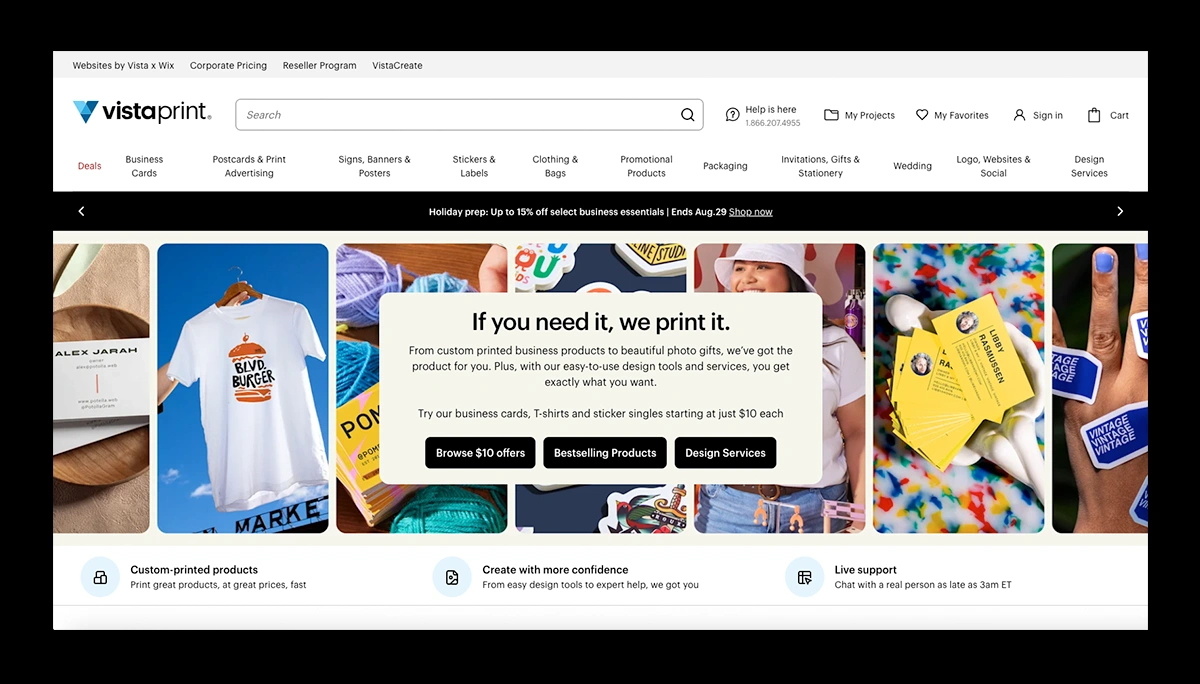
When it comes to helping small businesses look big, VistaPrint is in a league of its own.
While it’s best known for printing billions of business cards since 1995, today VistaPrint has evolved into a full-service hub for custom marketing materials, branded merch, promotional products, and even print-on-demand fulfillment.
The platform offers intuitive design tools, thousands of ready-to-use templates, and a robust reseller program that enables creators and businesses to customize, white-label, and sell products directly to customers.
Whether you’re ordering bulk apparel, creating high-end signage, or testing out POD items for your shop, VistaPrint offers a streamlined experience designed to help brands look polished, professional, and prepared without requiring design expertise.
💰Pricing: Because VistaPrint has an extensive catalog of over 1,000+ products, its pricing varies depending on the product and service:
Standard Product Pricing (Pay Per Product)
- Business cards start at $15 for 100
- Wedding invitations start at $75 for 100
- Apparel, signage, and custom promo items are priced individually
- Free access to thousands of templates and product mockups
Reseller Program (Optional)
Basic Plan – Free Forever
- Access to VistaPrint’s entire product catalog
- White-label shipping and fulfillment
- Unlimited design uploads
- Set your own pricing and profit margins
Premium Plan – $74.99/year
- Up to 40% discounts on select products
- Free shipping on orders over $60
- Priority support and dedicated reseller tools
Vista x Wix Website Builder (Optional)
- Free Plan – $0/month (basic customizable templates)
- Light Plan – $17/month (2 GB storage, 2 collaborators, custom domain)
- Core Plan – $29/month (50 GB storage, payments enabled, site analytics)
- Business Plan – $36/month (eCommerce features + branding tools)
- Business Elite – $159/month (unlimited storage + advanced scaling tools)
✅ Pros:
- Reseller Program acts as a print-on-demand workaround with white-label fulfillment
- Full creative control; you set your own prices and profit margins
- Built-in templates and design tools for non-designers
- Website builder powered by Wix for seamless brand integration
- Bulk discounts and up to 40% savings with the Premium plan
- White-label shipping keeps your brand front and center
- Trusted, well-established brand serving 17+ million businesses globally
❌ Cons:
- Not a true print-on-demand platform, as orders must be submitted manually
- No digital product or membership support
- Limited eCommerce integrations compared to competitors like Printify and Gelato
- Shipping costs can be high, and expedited delivery isn’t available
- Product quality can vary depending on the item
9. CafePress

If you’ve got quirky designs or niche ideas that deserve an audience, CafePress has been doing print-on-demand since before it was cool.
This platform doubles as both a POD service and a global online marketplace, making it an attractive alternative to Zazzle for creators who want to sell custom products without upfront costs.
CafePress allows you to upload your designs, personalize hundreds of products, including apparel, mugs, stationery, home décor, and even unique items like license plates and clocks, and you can either sell them through your own shop or the CafePress marketplace.
With its vast licensed content library, easy-to-use design tools, and built-in customer base, CafePress gives creators a simple way to generate passive income while tapping into a platform that attracts millions of shoppers worldwide.
💰Pricing:
Free to Join – $0/month
- CafePress sets a base price for each product
- You set your retail price above the base price, and keep 100% of the markup
- Earn 5% royalties on products sold directly through CafePress’s marketplace
- Royalties can be paid via PayPal (minimum $25) or check (minimum $100)
✅ Pros:
- Access millions of shoppers through CafePress’s global marketplace
- Simple interface for uploading artwork, customizing products, and managing shops
- Wide product catalog with access to niche items not available anywhere else
- Includes partnerships with fan portals and popular franchises
- Create your own branded storefront separate from the marketplace
- Global shipping that allows you to sell across North America, Europe, Asia, and beyond
- Flexible royalty control that lets you set your own markup
❌ Cons:
- Average print quality, with sometimes inconsistent results compared to higher-end POD platforms
- Higher base product pricing can make competitive pricing harder for creators
- Limited branding control; marketplace sales emphasize CafePress’s brand over yours
- Limited integrations and no direct syncing with eCommerce platforms like Shopify or Etsy
- Lack of customer support results in slow response times and limited resolution options
10. Redbubble
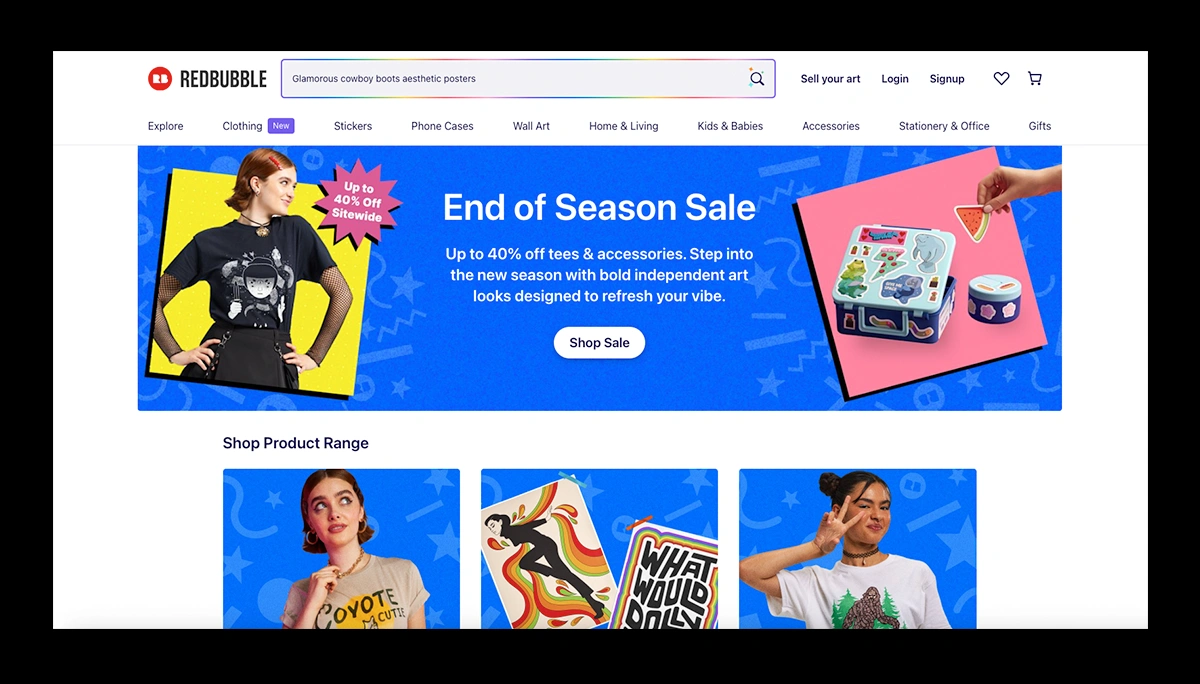
Looking for a platform where your art can travel the world while you focus purely on creating? Redbubble makes that possible.
Founded in 2006, Redbubble has grown into one of the largest artist-first print-on-demand marketplaces, connecting over 700,000 independent designers with millions of buyers globally.
Creators can upload their designs and place them on over 70 different products, ranging from apparel and stickers to home décor and accessories. Redbubble then handles the rest, from printing to shipping.
Its built-in audience, global reach, and strong creative community make it a great Zazzle alternative for artists who want passive income without managing inventory.
💰 Pricing:
Free to Join – $0/month
- Redbubble sets a base price per product
- Creators set their own markup and keep 100% of the profit above the base price
Fee Structure:
- Standard Tier Artists: 50% platform fee
- Premium Tier Artists: 20% platform fee
- Excess Markup Fee: Applied if royalties exceed 20%
- Payment Methods: PayPal or direct deposit; minimum payout is $20
✅ Pros:
- Massive built-in marketplace with millions of global shoppers actively browsing the platform
- The platform handles printing, shipping, and customer support
- Sell your designs to customers worldwide without worrying about logistics
- No upfront costs, start selling immediately without investing in inventory
- Supportive artist community that lets you connect with other creatives and showcase your work
- Strong fandom culture; popular among buyers looking for niche, fan-driven designs
❌ Cons:
- High platform fees make artists lose up to 50% of their earnings
- Limited product catalog compared to most POD platforms
- Inconsistent print quality depending on third-party printers
- Packaging and brand presentation are Redbubble-first, not creator-first
- A crowded marketplace where competition is high, making it harder to stand out
- No email list or upselling tools, providing limited ways to build a direct relationship with customers
- Pricing limitations like “excess markup fee” discourage setting higher profit margins
11. Spring (formerly Teespring)

Spring, formerly known as Teespring, has evolved from a simple t-shirt crowdfunding platform in 2011 into one of the most creator-focused print-on-demand (POD) platforms available today.
Designed for social-first selling, Spring makes it easy to create and sell custom products without upfront costs, inventory management, or technical hassle.
With over 8 million creators on the platform, Spring integrates seamlessly with platforms like YouTube, TikTok, Instagram, and Twitch, allowing you to reach your audience where they’re already engaging.
From apparel and home décor to digital downloads and even unique items like plush dolls and phone cases, Spring handles everything (including printing, fulfillment, shipping, and payment processing) so you can focus on designing and growing your brand.
💰 Pricing:
Free to Use – $0/month
- Pay only the base cost of the product, set your own retail price, and keep 100% of your chosen profit margin
✅ Pros:
- Completely free to start with no subscription fees or upfront costs
- Seamless integrations with YouTube Merch Shelf, TikTok Shop, Instagram Checkout, Twitch, Discord, and more
- Supports both physical and digital products like e-books, templates, and exclusive downloads
- Wide product catalog with 50+ customizable items, plus unique options like plush dolls, keychains, and pop sockets
- Automated printing, fulfillment, and global shipping
- Built-in analytics dashboard and integrations with tracking pixels for Facebook, Google, and Twitter
- Email marketing tools and retargeting ads to re-engage potential buyers
❌ Cons:
- Higher base prices than some competitors, which can limit profit margins
- Limited customization for storefront design and branding
- Customer support is not available 24/7 and has mixed reviews
- Quality control can vary since sellers have no direct oversight of production
- No native integration with platforms like Shopify or WooCommerce
12. Custom Ink

When it comes to pulling off big merch drops, team events, or branded swag campaigns, Custom Ink has been the go-to name in custom printing for over two decades.
While Zazzle caters more to marketplace-driven sales, Custom Ink focuses on helping organizations, schools, businesses, and event planners create high-quality, personalized products with full creative control.
Its Design Lab makes customizing products easy, whether you’re uploading your own logo or using the platform’s fonts, templates, and artwork.
From t-shirts and hoodies to drinkware, bags, and tech accessories, Custom Ink handles printing, embroidery, and fulfillment, making it a strong alternative for brands or groups looking to produce professional, large-scale merch without managing inventory.
💰 Pricing:
Free to Use — $0/month
- Pay only for the products you order
✅ Pros:
- Powerful Design Lab with drag-and-drop tools, fonts, clipart, and templates
- Volume discounts that reduce per-unit pricing for large orders
- Four flexible delivery options, including two-week standard shipping, one-week rush (+15%), and three-day super rush (+30%)
- Wide product catalog including apparel, drinkware, bags, tech accessories, and promotional swag
- Embroidery and screen-printing options for higher-quality branding
- Free professional design reviews before production
- Multi-address shipping to distribute orders directly to team members or recipients
- Transparent, all-inclusive pricing for U.S.-based orders
❌ Cons:
- Not designed for creators running recurring online storefronts
- Limited digital tools that lack built-in audience engagement, memberships, or automated campaigns
- No global fulfillment perks; free shipping applies only to U.S. addresses
- Quality control issues occasionally reported (color inconsistencies, mismatched proofs)
- No warehousing or inventory management options
- Higher per-item costs for smaller orders
13. TeePublic

If you want to get your art in front of millions without dealing with the messy backend of fulfillment, TeePublic makes it simple.
The platform allows you to upload your designs and instantly sell them on 75+ products, ranging from T-shirts and hoodies to stickers, mugs, and wall art.
With transparent commissions, built-in off-site marketing, and high-quality direct-to-garment printing, TeePublic handles everything (printing, packing, shipping, and customer support) so you can focus on creating.
Additionally, with licensed fan art programs and a strong emphasis on sustainability, it’s an excellent Zazzle alternative for creators seeking an easy way to monetize their work while retaining 100% ownership of their designs.
💰Pricing:
TeePublic is completely free to use. However, you earn a commission on every sale, with rates based on your account type:
- Artisan accounts – Top-tier creators earn the highest commissions and are typically reserved for artists with high-quality, unique designs
- Apprentice accounts – The default starting tier for new designers
- Curator accounts – For affiliates promoting products, often offering different payout rates
✅ Pros:
- Free to join with zero upfront costs or listing fees
- Over 75 products available, including apparel, accessories, and home decor
- Clear, transparent commission structure with predictable payouts
- Access to licensed fan art partnerships for popular franchises like Stranger Things and Star Trek
- Automatic off-site marketing across Google, Instagram, and Facebook
- High-quality DTG printing for sharp, durable designs
- Garments sourced from WRAP-certified ethical suppliers and eco-conscious production
- Artists retain 100% ownership of their artwork
❌ Cons:
- No control over product pricing or profit margins
- Affiliates can sometimes earn higher commissions than artists
- Limited flexibility to sell designs outside of TeePublic’s marketplace
- Cannot print neon or fluorescent color designs
Choosing the Best POD Platform for Your Store
With so many print‑on‑demand platforms out there, picking the right one comes down to how much control you want over your brand.
Marketplaces like Zazzle are great if you just want to upload designs and let the platform handle visibility, but they limit your pricing, branding, and customer relationships.
If your goal is to build a real business and not just sell products, you need a platform that puts you at the center of your store, not the marketplace.
That’s where Fourthwall stands out.
Unlike other platforms that keep you locked inside their ecosystem, Fourthwall provides a customizable storefront that you fully own, complete with your own URL and branding.
You can sell physical products, digital downloads, and memberships all in one place, with no third-party apps required. Plus, with built‑in integrations for YouTube, TikTok, Twitch, and email marketing tools like Klaviyo and Mailchimp, connecting with your audience has never been easier.
So, if you’re serious about growing your POD business and want a platform that allows you to keep more of what you earn, then sign up with Fourthwall now!
FAQ: Zazzle Alternatives
What are the best Zazzle alternatives for creators seeking complete branding control?
If you’re ready to move beyond Zazzle’s marketplace and fully own your brand, platforms like Fourthwall, Shopify, and Sellfy give you that freedom.
These sites let you design a branded storefront, create or transfer your custom domain, and set your own retail prices with no middleman or marketplace restrictions.
This gives you total creative control over your brand identity, profit margins, and customer experience from start to finish.
Which Zazzle alternatives have the strongest product personalization tools?
If you rely on customization to drive sales, platforms like Gelato (via its Personalization Studio) and Spreadshirt/SPOD offer some of the most seamless live-editing tools for personalized products.
If you’re looking for more branding tools, Printful and Printify integrate with Shopify apps that support advanced personalization fields, such as names, dates, or custom colors.
These tools are ideal for creators offering made-to-order gifts, custom apparel, or unique holiday designs.
How do royalties and profit margins compare to Zazzle’s marketplace model?
Zazzle pays sellers a royalty fee (usually between 10–15%) which means your earnings depend on their pricing structure and visibility algorithm.
Raising your royalty too high can even make your listings less competitive in search results.
On the other hand, platforms like Fourthwall, Shopify, Printful, and Sellfy allow you to set your own product prices and keep full profit margins, while also collecting customer data to build long-term relationships and repeat sales.
How do I replace Zazzle’s built-in traffic if I switch to a different platform?
When you leave a marketplace like Zazzle, you’re essentially shifting from “borrowed traffic” to owned growth.
To make that transition smooth, focus on building SEO-optimized product pages. You can do this through email marketing and integrating your store with YouTube, TikTok Shop, and Instagram Shopping.
Platforms like Fourthwall help accelerate this through built-in tools for memberships, digital products, and fan tips, while Shopify offers apps for reviews, bundles, and abandoned-cart recovery; all of which help you turn casual browsers into loyal customers.




